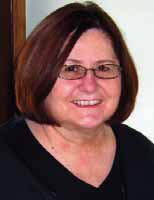
SEJ President's Report
By CAROLYN WHETZEL
"It is not the strongest of the species that survives, nor the most intelligent that survives. It is the one that is the most adaptable to change." Charles Darwin
What will the Society of Environmental Journalists look like in 2013 and beyond? That’s the question SEJ’s leadership tackled at a day-long retreat in late July.
Results of a research project underwritten by the Brainerd Foundation to identify SEJ’s strengths and weaknesses served as a basis for a discussion on a strategic path for the organization over the next three years.
While the research armed the SEJ board of directors with some information to begin retooling, it’s clear that more detailed data is needed from members on which programs and services they find most valuable, and what new ones they would like to see SEJ offer.
As a result, SEJ will be actively polling members to gather the necessary information.
Some of the data indicated SEJ should adapt and incorporate new technology to improve its website and communication tools, such as the listserv; offer regional events; offer programs for journalists working on new media platforms; and rely less on foundation grants and more on individual donations and earned income.
One clear message the findings showed is that SEJ is “a community of journalists who care about good reporting on the environment” and are a “network of people who help each other.”
The next step for SEJ’s leadership is to develop a focused roadmap for a sustainable future in the evolving media industry that will help all journalists navigate the complexities of covering environmental issues. That plan also must reflect the funding challenges facing nonprofit groups. As always, the plan will be posted on the website.
Organizations, like any species, must change to survive. The board’s job is to ensure SEJ adapts and stays on the right side of change.
As I write this column, my last as SEJ president, Douglas Fischer, the board’s future sites chair, is talking to officials at Colorado State University and other universities to pique their interest in hosting a future SEJ conference. SEJ recently accepted an invitation from the University of Tennessee, Chattanooga to return to that city for its 2013 conference — UT hosted SEJ’s 1998 conference.
“None of these conference leads materialize out of thin air,” Douglas told me. “They happen because interested members reach out to contacts in their city or local university and introduce them to me. We’re talking to CSU because Fort Collins SEJ member Bobby Magill pitched the conference to university administrators there. I’m talking to University of Chicago thanks to a Michael Hawthorne introduction.” Chattanooga only happened because SEJ member Peter Dykstra opened the door for Douglas to UT’s David Sachsman, also an SEJ member, he added.
Douglas said he’s ready “to work with other members to develop conference proposals.”
In my nearly 11 years serving on SEJ’s board, I have never ceased to be amazed at how much SEJ accomplishes with so little.
A dedicated, small team of full- and part-time workers are the engine that runs SEJ on a daily basis. But it’s the member volunteers that fuel the SEJ engine and make possible the SEJournal, the annual conference, the awards program, the various listservs, the Freedom of Information Task Force, the freelance directory that connects editors with journalists, and much, much more.
SEJ also expands its reach by partnering and collaborating with other organizations, including the universities that host the conferences.
Earlier this year, Michigan State University’s Knight Center for Environmental Journalism teamed up with SEJ to host two workshops for journalists and scientists to improve climate change coverage in the Great Lakes region. SEJ also partnered with Reporting on Health at the University of Southern California to host a webinar on using human testing in environmental health and storytelling and with the Environmental Law Institute to host a program on the environmental, energy, and natural resources issues the 2012 presidential candidates should address.
Meanwhile, SEJ has just named the winners of its 11th annual awards for environmental journalism, including for the first time awards for photojournalism. Staff also has just started processing applications for a new round of Fund for Environmental Journalism grants.
Randy Lee Loftis of the Dallas Morning News, co-chair of the 2012 conference, is working with SEJ’s conference team and Texas Tech University to bring SEJ members yet another information-packed event in Lubbock Oct. 17-21.
In Lubbock, my two years as SEJ president come to an end. I have two remaining years in my term on the board and I will continue to help SEJ adapt to the challenges ahead so that it can survive to strengthen the quality, reach and viability of journalism across all media to advance public understanding of environmental issues. Thank you for the opportunity to serve on the board of this organization.
Carolyn Whetzel covers environment issues in California for Bloomberg BNA.
* From the quarterly newsletter SEJournal, Summer/Fall 2012. Each new issue of SEJournal is available to members and subscribers only; find subscription information here or learn how to join SEJ. Past issues are archived for the public here.













 Advertisement
Advertisement 




